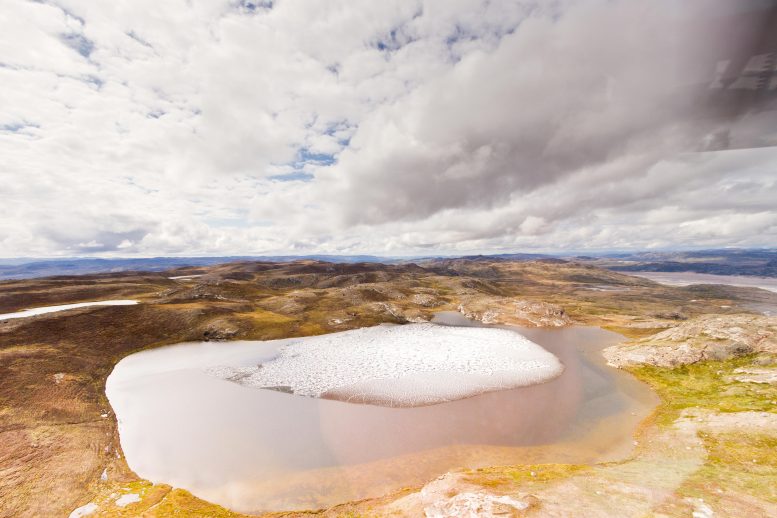
Researchers have discovered that Greenland’s ice sheet melted significantly as recently as 416,000 years ago, indicating its high sensitivity to climate change. This melting resulted in a considerable global sea-level rise, which combined with today’s high CO2 levels, poses a serious threat to our future. Credit: Joshua Brown/UVM
Scientists report much of the Artic island’s ice melted as recently as 416,000 years ago, which has implications for sea-level rise.
Newly analyzed samples from underneath Greenland’s vast ice sheet reveal the Arctic island was considerably greener as recently as 416,000 years ago. This discovery challenges prior beliefs that Greenland’s massive glacier, occupying roughly 80 percent of the 836,300-square-mile land mass, has been constant for the last two and a half million years.
Ice Sheet Sensitivity to Climate Change
“We’re discovering the ice sheet is much more sensitive to climate change than we previously thought,” says Utah State University geoscientist Tammy Rittenour. “This is a foreboding wake-up call.”
Rittenour, with colleagues from the University of Vermont and fourteen other institutions, reports findings in the July 20, 2023, issue of the journal Science. Their research is supported by the National Science Foundation.
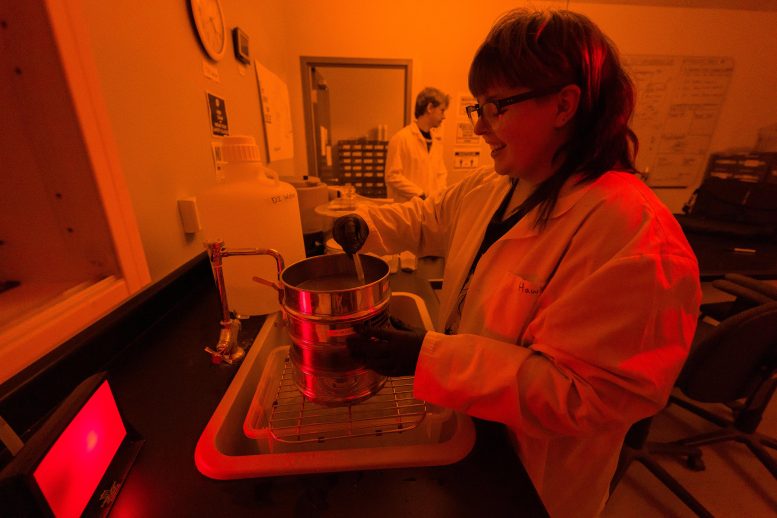
In the Utah State University Luminescence Lab, graduate student Hawke Woznick uses sieves to prepare sediment samples from Greenland’s Camp Century for OSL dating. USU Geosciences Professor Tammy Rittenour and colleagues reported findings about the samples in the July 20, 2023, issue of the journal Science. Credit: USU/Levi Sim
Unstable Future of Greenland’s Ice Sheet
A greener Greenland means the island’s formidable-appearing ice sheet – nearly two miles thick in places – is not as stable as assumed.
“We had always assumed the ice sheet has remained about the same for nearly 2.5 million years,” says Rittenour, professor in USU’s Department of Geosciences. “But our investigation indicates it melted enough to allow the growth of moss, shrubs, and buzzing insects during an interglacial period called Marine Isotope Stage 11, between 424,000 to 374,000 years ago.”
The melting caused at least five feet of sea-level rise around the globe, she says. “Some of our model scenarios suggest sea levels up to 20 feet higher than today.”
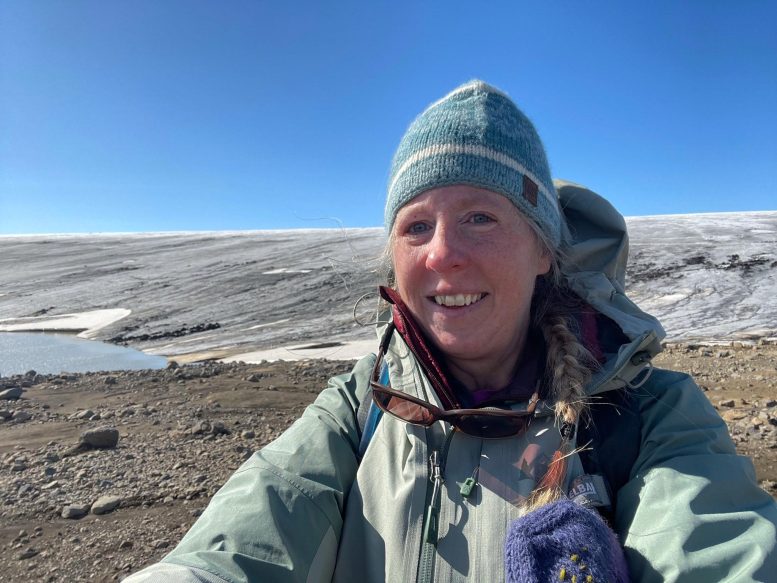
Utah State University Geosciences Professor Tammy Rittenour, pictured in July 2023 at Iceland’s Langjökull ice cap, studies the paleoclimatology of extreme environments throughout the globe. Credit: USU/Tammy Rittenour
The Alarm of Rising CO2 Levels
“It was an unusually long period of warming with moderately elevated levels of carbon dioxide – CO2 – in the atmosphere,” Rittenour says. “What’s alarming about this finding is today’s CO2 levels are 1.5 times higher.”
Even if humans abruptly stopped activities that contribute to greenhouse gas emissions, she says, “we’d still have inflated CO2 levels for hundreds, maybe even thousands, of years to come.”
That’s an uneasy realization, she says, with current rates at which Greenland’s ice sheet is thawing.
“And that’s not taking Antarctica and other glacial areas into consideration,” Rittenour says. “The deglaciation has implications for the entire globe and is especially sobering for our coastal mega-cities, where so much of the world’s population resides.”
From Cold War Relics to Climate Science
The team’s analysis is a continuation of research started several years ago, when the scientists happened upon samples collected from an extraordinary, Cold War-era military project.
“In 1960, the U.S. Army launched a top-secret effort called Project Iceworm in northwestern Greenland to build a network of mobile nuclear launch sites under the ice sheet,” Rittenour says. “As part of that project, they also invited scientists and engineers to conduct experiments in a highly publicized ‘cover’ project, known as Camp Century, to study the feasibility of working and carrying out military missions under ice and in extreme-cold conditions.”
Unlocking The Past From Forgotten Samples
Hampered by brutal blizzards and unstable ice conditions, Project Iceworm’s cavernous underground bunker and tunnels were abandoned in 1966. But sediment samples collected at the bottom of a more than 4,000-foot-long ice core extracted from the site have yielded the surprising information about Greenland’s not-so-distant geologic past.
The frozen soil samples from the base of the Camp Century ice core were forgotten in a freezer for decades, until recently re-discovered.
“We have very few samples from below the Greenland ice sheet, because most drilling missions stop when they reach the base of the ice,” Rittenour says. “These re-discovered Camp Century sediments represent a unique, unspoiled time capsule of past conditions.”
Advancements in Science Technology
While the frozen soil sat in a freezer for more than 60 years, science technology advanced. Rittenour, who is director of the USU Luminescence Laboratory, was invited to help date the sediment.
“Because the samples remained frozen and largely untouched, I was able to use luminescence dating to determine the last time they were exposed to sunlight,” she says. “If researchers had examined the sediments in the past, we couldn’t have run any of the analyses we did for this paper.”
Rittenour says today’s investigative technologies enable researchers to distill a good record of what’s happened in Greenland and other parts of the world.
“These once-lost, Cold War relics from a top-secret nuclear military base carved within the ice are continuing to tell their secrets, and forewarn us of the sensitivity of Earth’s climate,” she says. “If we can lose the far northwest portion of the Greenland ice sheet under natural conditions, then we’re treading dangerous waters given current elevated greenhouse gas conditions.”
For more on this research:
Reference: “Deglaciation of northwestern Greenland during Marine Isotope Stage 11” by Andrew J. Christ, Tammy M. Rittenour, Paul R. Bierman, Benjamin A. Keisling, Paul C. Knutz, Tonny B. Thomsen, Nynke Keulen, Julie C. Fosdick, Sidney R. Hemming, Jean-Louis Tison, Pierre-Henri Blard, Jørgen P. Steffensen, Marc W. Caffee, Lee B. Corbett, Dorthe Dahl-Jensen, David P. Dethier, Alan J. Hidy, Nicolas Perdrial, Dorothy M. Peteet, Eric J. Steig and Elizabeth K. Thomas, 20 July 2023, Science.
DOI: 10.1126/science.ade4248

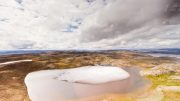
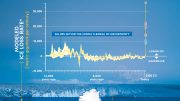
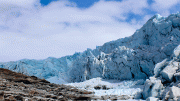
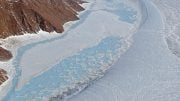

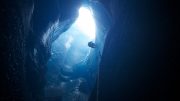
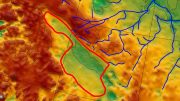
“What’s alarming about this finding is today’s CO2 levels are 1.5 times higher.”
I find it interesting that given the above fact, everyone is still clinging to the paradigm that anthropogenic CO2 is causing warming. One can rationalize that the Greenland Ice Sheet hasn’t melted because melting takes a finite amount of time. On the other hand, it is suggestive that the warming is driving increased bacterial decomposition, particularly in the Arctic tundra, and increased respiration from the roots of trees in the boreal forests. However, no one is even looking at those sources, despite the fact that the seasonal changes at a monthly temporal-resolution show clearly that those processes are driving the ramp-up of CO2 from September through May, and the draw-down from May through September when photosynthesis is active in the Northern Hemisphere.
Never let facts get in the way of a good story.
Reconstructed temperature data shows substantial warming occurring approximately every 400,000 years for the past 2 million years. The last warming occured 400,000 years ago. So this totally natural warming cycle has started right on time. There is absolutely nothing we can do about it except adapt to it. Adapting will require energy. We need solar, oil, coal and nuclear to build the infrastructure to adapt. We need all the people of the world to become developed to adapt. Quit trying to revert to poverty type energy systems. Quit trying to choke off development in undeveloped parts of the world to stop CO2 production. We can cope with the changes if the whole world is developed. We cannot stop the changes and the problems they cause if we are not all developed.